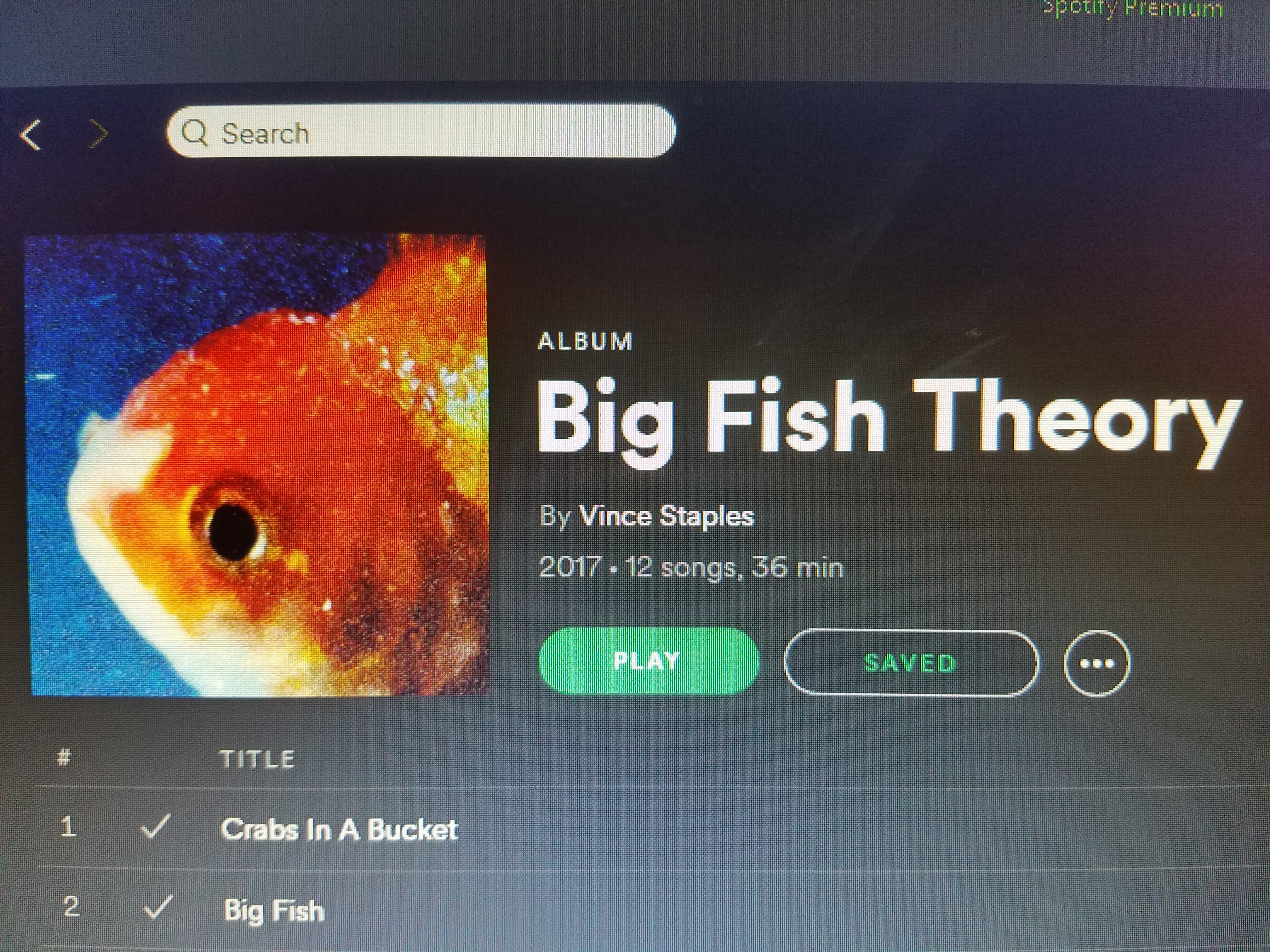California rapper Vince Staples has been on a significant rise in the underground hip-hop scene since his debut in 2010. The 24-year-old first appeared as a featured artist on popular tracks from the now mostly defunct Odd Future group, with rappers such as Earl Sweatshirt and Tyler, The Creator. Since then, he released four mixtapes, two EP’s and his second studio album on June 23,“Big Fish Theory.” The majority of his releases have garnered positive reception from critics and fans alike, especially his 2015 album “Summertime ‘06” and last year’s EP “Prima Donna.”
“Big Fish Theory,” however, is a result of Staples taking a much more experimental approach to his production that doesn’t always fully deliver. Staples has always taken most of his songwriting inspiration from his experience growing up in a city heavily permeated by the violence and chaos of gang culture. He has written many strong verses on this subject throughout his career with many stories left to tell. Still, seven years is a long time to write about the same subject, and as a result some of the tracks on this record come off as stale, low effort and redundant.
BEST CUTS
The record’s second track, “Big Fish,” is the strongest from the album’s first half. Staples delivers contemplative verses on his involvement in the music industry and whether it has actually affected him in any significant way, peppered with his usual references to his neighborhood and old gang. While his delivery is just as frigid and unforgiving as ever, there is a greater sense of charisma and confidence on this track that builds a lot of steam for the listener. The instrumental produced by Christian Rich is a stark departure from the usually dark and foreboding beats that drive Staples’ verses. Instead of guttural and rattling sounds, the beats are more contemporary and “pop-ish,” filled with watery synth riffs and crisp, clear snares that really reinforce the song’s focus.
“Yeah Right” is reminiscent of Staples’ older tracks but with an even more jagged texture. The instrumental put forth by experimental electronic producers SOPHIE and Flume features erratic and staggered percussion with bass so distorted and vicious it could shatter glass. Staples lays down a few charged verses of how skeptical he is about most rappers actually living the lives that they brag about and is backed up by an additional verse from fellow rapper, Kendrick Lamar. This cut is the most interesting and layered of the whole record and Lamar’s flawless verse is icing on the cake.
WORST CUTS
“745” has one of the funkiest and catchiest instrumentals on the record, produced by Jimmy Edgar. It takes the jazzy synths and bass of the G-funk genre and mixes it with some rolling hi hats and snares to give it a little trap influence. However, the lyrics detailing Staples’ struggles with a girl on date night and the redundant hook are like expired chocolate chips on top of the instrumental’s delicious ice cream.
Similarly, the track “SAMO” suffers from uninspired songwriting as well as another SOPHIE instrumental that is a little too repetitive to be interesting for more than 20 seconds.
FINAL THOUGHTS
It’s clear that Staples has not lost his ability to provide brutally honest and clever songwriting driven by his unique circumstances and personality. However, he takes a lot of risks on “Big Fish Theory” that muddy an album which would otherwise be a crystal-clear EP. While there are some shining examples of Staples’ talent on the record, “Big Fish Theory” comes off as a half-baked endeavor that ultimately leaves a lot more to be desired.
HONORABLE MENTIONS: Visual Element (Not included in word count)
Best: “Party People”; “BagBak”; “Homage”
Worst: “Alyssa Interlude”; “Love Can Be…”; “Rain Come Down”
PHOTO (Carli Choose Your Favorite) : permission: Adam DeRoss
Caption: In “Big Fish Theory”, Vince Staples experiments with production, lyricism and sound, although not always successfully.


